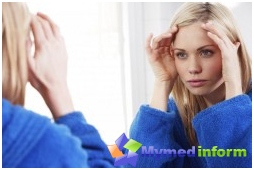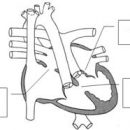According to scientific research, this disease is observed mainly in women (10-25 times more often than in men) aged from 30 to 60 years. Very rarely she meets in children. To date, there are actually no information about the spread of the disease at an early age. For example, according to Japanese scientists, in 1997, the incidence was 0.04 for 100 thousand children's population.
Unfortunately, the exact causes of Shegon's disease were not fully understood. It is known only that in 1933. Famous ophthalmologist Shegran from Sweden described the symptoms accompanying a disease - dry mucous membranes and eye discomfort in humans.
Most scientists argue that this disease appears due to pathological reactions of the human immune system for retroviral infection.
Manifestations of disease
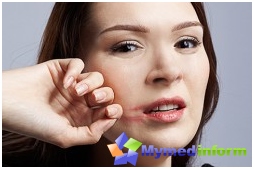
To date, two types of symptoms are known:
- Ferrous.
- Elders.
They allow you to determine the presence of SHEGREEN DISTRICT. Consider in more detail each of them.
It is worth noting that secreting glands are affected by ferrified form, which is why their functional activity is reduced. In other words, the eyes begin to hurt due to the decrease in the number of tear fluid, and as a result there is burning and dryness. Patients tell that the feeling appears, as if sand got into the eyes. In some cases, itching and redness of the eyelids is observed, and white viscous liquid can be collected in the corners. In aggravation of the disease, even visual acuity decreases, light-andased arises, as well as the narrowing of the eye cracks.
In addition to the eyes, there are still salivary glands with this disease, causing inflammation that can grow into chronic. In this case, the number of salivary glands becomes greater, dryness appears in the mouth.
Often to such complications, a person appears on the lips, the lymph nodes are increasing, dries the bumps. Sometimes people even changed face. This is due to the parotid glands that begin to grow. These features in the literature are described as «Morner chipmunk» or «Forecock Homyaka».
It is worth noting that dryness in the mouth at the initial stage of the disease can sometimes appear in humans when performing physical exertion or excitement.
But in the already progressive stage, this symptom becomes more regular. That is, the patient constantly wants to drink food during dinner, and in the process of conversation. This is due to the dryness of the tongue and a very scarce amount of free saliva, which is also also foaming and is viscous.
The mucous membrane becomes so vulnerable that it is very easy to injury. Also changing her color - from pale pink becomes bright pink. In this case, the patient's lips can be inflamed and covered with a crust.
At the last stage, the dryness of the oral cavity is so increased that a person is not able to swallow food, shack saliva, and sometimes even talk. The lips are covered with cracks, the tongue becomes folded, the oral cavity can eitherogue, because it absolutely does not remain free saliva.
A characteristic crusts appear in the nose, and in the auditory pipes - a clearance that can lead to development Otita And deafness. The voice becomes husky, which is associated with the dryness of the pharynx.
Such infections as pneumonia, Sinusitis and recurrent tracheoobronchitis often appear in the complications of SHEGREEN Disease. Also in third of the patients there are lesions of the glands of external genital organs. It is manifested by redness, itching, burning, as well as dry vagina in women.
In some cases, patients complain of excessive dry skin, someone notices a decrease in sweating.
Many disease can grow into chronic atrophic gastritis with pronounced secretory insufficiency. So the patient can feel discomfort after a meal, accompanied by Nausea, Ottg, Sometimes vomiting, pain in the opposite region.
Most patients develop cholecystitis and hepatitis. Could borrow in the mouth, pain in the right hypochondrium. In this case, it is desirable to exclude fatty and heavy food from diet.
If a person has been seen to the appearance of the disease Pancreatitis (pancreatic disease), then there is a possibility that the digestion system in general will be broken.
The second type of disease manifestation - extra-piece - quite diverse and is systemic. In almost 10% of patients, stiffness may appear in the morning, moderate muscular weakness, muscle inflammation and joint pain.
Some enhance the necessary, occipital, cervical and submandibular nodes. Liver size at times becomes more.
Half patients have respiratory tract lesions. They complain mainly on the allocation and dryness in the throat, shortness of breath and cough.
Shegon's disease also affects vessels. On the skin of the legs, hips, as well as berries and stomach may appear bloody rashes. They are accompanied by increased Temperature, Itching and burning.
A third of the patients suffers from the impaired sensitivity, as well as the defeat of the trigeminal and facial nerves. On the Antibiotics, Preparations of group B, Novocaine, as well as chemicals and sulfonamides may appear allergies. Some products may also be a reaction, so it is worth being careful, especially in tasting new dishes.
Diagnostic events
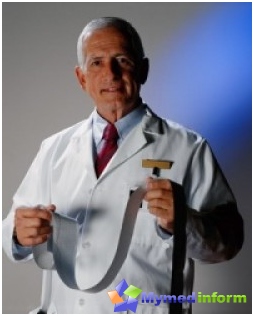
In the treatment of SHEGREEN Disease, first of all, it is worth paying attention to hormones and cytostatic immunosuppressants (cytostatics - substances that block cell division).
If the studies have identified moderate disorders of laboratory indicators and a complete lack of systemic manifestations, then this is definitely the initial stage of the disease, which should be treated with prednisone (5-10 mg / day).
If the stage is more pronounced (late), but systemic manifestations are still absent, then chlorbutin (2-4 mg / day) is added to the prednisone (2-4 mg / day). After that, it is possible to appoint these drugs with the subsequent and long (several years) reception.
As for the severe systemic manifestations of SHEGREEN disease, the most effective method of treatment is the so-called pulse therapy using large doses of prednisolone and cyclophosphane (1000 mg of 6-methylprednisolone intravenously daily for three days in a row) and single intravenous administration of 1000 mg of cyclophosphane. The patient is then transferred to moderate doses of prednisolone (30-40 mg / day) and cyclophosphamide (200 mg intramuscularly 1-2 times a week) in the absence of impact on the liver. This treatment is well tolerated by patients and, most importantly, helps to avoid most complications.
In the treatment of patients with ulcerative-necrotic vasculitis, glomerulonephritis, polyneurite, myelopolyadiculiteurite, cerebrovasculite, due to cryoglobulinemia, effective pulse therapy in combination with extracorporeal methods. For example, such as hemosorption (withdrawal of toxic products from blood), plasmapheresis (removal of a part of blood plasma from the body).
When defeating the eyes, local therapy is recommended, which is aimed at eliminating dryness, as well as preventing the emergence of secondary infection. At the same time, artificial tears are prescribed to the patient. And depending on the severity of the eye damage depends on the dosage - from 3 to 10 times a day.
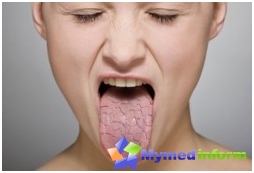
To overcome dry mouth, strengthen the walls of the salivary glands, as well as improve and restore the epithelium of the mucous membrane, prescribe therapy of chronic inflammation of the salivary glands.
Novocaine blockades are used to normalize secretion and nutrition.
In the development of purulent vapor, after antibiotics are administered, antifungal drugs are prescribed for local use.
In this case, intramuscularly or intravenously administered calcium to reduce the permeability of the ducts.
Sea buckthorn oil and rosehip helps a lot when redoing the brown and dryness of the mucous membrane. Well, if you acquire the ENKAD preparation (active derivatives of nucleic acids), which has antibacterial properties.
Appliques of isotonic sodium chloride solution are used with dry nose mucous membrane.
Kalievo-iodistan jelly will help reduce the feeling of dryness in the vagina.
In the presence of chronic gastritis, replacement therapy is prescribed (for example, hydrochloric acid or natural gastric juice).
If you want to enjoy life, try to always follow your health. And with any signs of the disease immediately contact the doctor. After all, with a timely manner, treatment will be able not only to slow down the development of the disease, but also to get rid of it. And remember your health in your hands!




